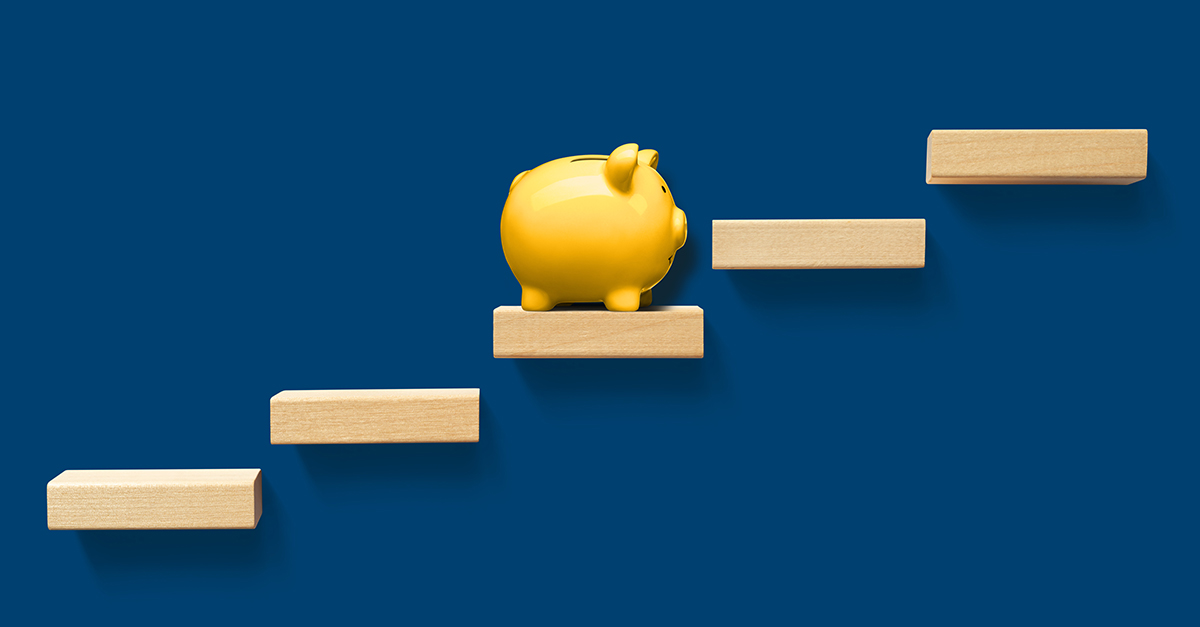My advice • November 25, 2022
modified on February 13, 2024
Tailoring a successful withdrawal strategy to your retirement
Enjoy every second of your next step.

 Pierre-Raphaël Comeau
Pierre-Raphaël ComeauExpert Advisor, Wealth Management at Laurentian Bank
Retirement is like a second life—one that may last several years, decades even. And it’s the perfect time to start checking off those bucket list items you’ve only been dreaming about, but haven’t gotten around to because your busy schedule has gotten in the way. Between now and then, proper planning is crucial if you want to get the most out of your retirement. An effective withdrawal strategy can help you get there. So let’s explore your options with Pierre-Raphaël Comeau, Expert Advisor, Wealth Management at Laurentian Bank.
Do more with your money
Several factors will have an impact on your retirement income—think inflation, investment yields, and how flexible your sources of income will be over time. The goal of your withdrawal strategy should be to maximize your savings due to and despite the aforementioned factors. On top of helping you rest easy, your strategy will empower you to enjoy the kind of stimulating retirement you want, whether that involves traveling, volunteering, or going back to school.
Once you’ve gotten your withdrawal strategy on lock, you’ll need to consider human factors on top of the financial ones, including the state of your health, the age difference between you and your partner, your retirement plans, and any estate planning you have in mind.
Know when and how to retire
There’s no magic number or formula. Some people want to stop working all at once, while others will want to back away slowly. “There’s a strong trend of gradual retirement and semi-retirement in recent years, since it’s an approach that facilitates a smoother transition from the full-time career phase of life,” highlights Pierre-Raphaël Comeau. If that’s what you want to do, a solid withdrawal strategy will make all the difference. For instance, you can hold off on using certain sources of income while you work part time or do a bit of consulting on the side.
Sources of retirement income
Government benefits
The Québec Pension Plan (QPP) provides basic financial support upon retirement. Anyone who has paid into the plan can receive payments starting at age 60. That said, you won’t get 100% of your benefit until 65. If you can wait just a bit longer, your QPP payments could go even higher. Every month delayed will earn you an additional 0.7%, up to 142% of the maximum pension if you wait until you’re 70 years old.
The federal government’s Old Age Security (OAS) pension can be accessed starting at age 65. Delaying your OAS pension can also pay off. For every month you hold off on taking OAS, you’ll gain an additional 0.6%, up to a maximum of 136% of the benefit if you wait until you’re 70 years old. No matter when you start receiving OAS, you’ll enjoy a 10% bump when you turn 75.
RRIF: What comes after the RRSP
While a Registered Retirement Savings Plan (RRSP) is basically a vehicle for savings that can help you accumulate capital, you’ll need to convert it into a Registered Retirement Income Fund (RRIF) to start withdrawing. You can convert your RRSP into an RRIF any time before December 31 of the year you turn 71.
Starting the year after the conversion, a minimum amount will have to be withdrawn annually, which will be considered taxable income by the CRA. This amount will grow progressively over the years.
Once your RRSP has become an RRIF, you’ll need to review your investments. The goal: receiving a stable income that meets your needs and helps make your retirement dreams a reality. Once you and your advisor have decided on a withdrawal strategy together, you’ll be ready to get to work on the composition of your investment portfolio.
Other sources of income
Some people avail themselves of employer-sponsored retirement plans, while others tap into savings that they’ve tucked away over time through unregistered investment options like a TFSA. Ask your advisor for the most advantageous amounts and sources to withdraw from, as well as when. They’ll have a nuanced understanding of your financial situation—and your withdrawal strategy at the ready.
Let your taxes work for you
There’s a wide range of tax programs and credits that are designed to meet various needs and whose characteristics and eligibility criteria also vary—take, for instance, the age amount tax credit and the tax credit for a career extension. The right strategy will help you get the most out of these opportunities, enabling you to make your retirement plans bigger and better.
If you have a partner, you may be eligible for income splitting. This entails assigning income to your better half, which has its advantages.
Get sound advice
Since there are as many retirements as there are humans, there’s no silver-bullet solution out there for the copy-pasting, which is why you shouldn’t deprive yourself of professional advice. “The best strategy involves meeting with an advisor who listens to you, gets to know you, gets excited about your projects, and crafts a customized withdrawal plan alongside you, so you can start this new chapter with a whole lot of confidence,” shares Mr. Comeau.
Book an appointment with an advisor today!
+ Legal Notices
Laurentian Bank: Laurentian Bank of Canada
TFSA: Tax-Free Savings Account
RRSP: Registered Retirement Savings Plan
RRIF: Registered Retirement Income Fund
QPP: Québec Pension Plan
OAS: Old Age Security Pension
New investment accounts are offered by LBCFS which is a subsidiary of Laurentian Bank. LBCFS is a wholly owned and a legal entity distinct from Laurentian Bank and Mackenzie Investments. Mutual funds (« funds ») and the financial planning service are offered by LBCFS. Mutual funds are part of the Laurentian Bank Group of Funds managed by Mackenzie Investments. A Laurentian Bank advisor is also a licensed LBCFS Mutual Fund Representative.
The articles on this website are for information purposes only. They do not create any legal or contractual obligation for Laurentian Bank and its subsidiaries.
These articles do not constitute financial, accounting, legal or tax-related advice and should not be used for such purposes. Laurentian Bank and its subsidiaries may not be held liable for any damage you may incur as part of such use. Please contact your advisor or any other independent professionals, who will advise you as needed.
The articles may contain hyperlinks leading to external sites that are not managed by LBC. LBC cannot be held liable for the content of such external sites or the damage that may result from their use.
Prior written consent from the Laurentian Bank of Canada is required for any reproduction, retransmission, publication or other use, in whole or in part, of the contents of this site.








